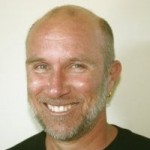 As Oracle’s original Creative Director, Tom Hogan created some of the company’s signature programs, including ORACLE Magazine (later known as Oracle Open World.) After working as VP of Marketing for a number of startups and Fortune 500 companies, Tom joined the VC world, co-founding Crowded Ocean, a marketing consultancy that has launched over 50 startups, including Palo Alto Networks, Sumo Logic, Nimble Storage and Snowflake Computing. He is the co-author of The Ultimate Startup Guide: Marketing Lessons, War Stories, and Hard-Won Advice from Leading Venture Capitalists and Angel Investors.
As Oracle’s original Creative Director, Tom Hogan created some of the company’s signature programs, including ORACLE Magazine (later known as Oracle Open World.) After working as VP of Marketing for a number of startups and Fortune 500 companies, Tom joined the VC world, co-founding Crowded Ocean, a marketing consultancy that has launched over 50 startups, including Palo Alto Networks, Sumo Logic, Nimble Storage and Snowflake Computing. He is the co-author of The Ultimate Startup Guide: Marketing Lessons, War Stories, and Hard-Won Advice from Leading Venture Capitalists and Angel Investors.
Last year, Tom moved to Austin and started a new career, as an author and screenwriter. His first script, The Devil’s Breath, a noir thriller based in Auschwitz in 1944 (Tom was a Professor of Holocaust Studies before joining Oracle) has won awards at both the Napa Valley and Austin film festivals. His first novel, Left for Alive, was just published by Archway Press. He’s now in the process of turning The Devil’s Breath into a novel and Left for Alive into a screenplay.
It was enjoyable to sit with Tom and hear about his jump from advising tech startups to writing novels and screenplays.
M.R. Rangaswami: What prompted you to change industries so dramatically, and how is it going?
Tom Hogan: Before joining Oracle, I taught Holocaust Studies at Santa Clara University. I also had written a novel in graduate school that was sponsored by the Nieman Foundation. About three years ago, when I started thinking about the next phase in my life, I combined the two pursuits: writing and the Holocaust. I had the idea for a thriller set in Auschwitz, which I planned to do as a novel. But everyone I talked to thought it would make a great movie. So I used my unpublished novel to teach myself screenwriting—a very different craft from fiction writing. In the process of working with the novel, I found that the story was great—I was just too inexperienced back when I first wrote it to do it justice. So I did two things at the same time: wrote the Auschwitz screenplay (which is now making the rounds in Hollywood) and reworked the novel (just published). Now I’m reversing the process: turning the Auschwitz story into a novel and turning Left for Alive into an indie script.
M.R.: What are the lessons you have learned from launching over 50 startups that you can share with those who are just starting-up?
Tom: For our book, The Ultimate Startup Guide, my partner, Carol Broadbent, and I went back and met with the founders and CEOs of most of our 50 startups, as well as our VC network. We found that they—and we—had the same experiences and advice:
- Take the time to get it right the first time. Re-launching a company is incredibly costly—as well as career-limiting.
- Listen to Sales—they’re in contact with your customers on a daily basis and can tell you what part of your positioning and messaging works and what needs to be retooled.
- You can’t have too much content. The average enterprise sale requires seven touches, which means you need seven different pieces of content. Luckily a strong white paper can be repurposed into five pieces of related content (blogs, articles, etc.)
- Outsource whatever possible. It keeps your burn rate low and your investors happy.
- Avoid ‘post-launch depression’. Don’t just launch and expect the coverage and leads to keep rolling in. Have an outbound demand gen and supporting PR plan in place for the first three months post-launch.
M.R.: What are the lessons from your life in Silicon Valley that are valuable to your new life working with producers and publishers?
Tom: It’s striking how similar Silicon Valley and Hollywood are. First, the failure rate is equally high—the odds of your screenplay making it to the screen are as long as that startup idea on your napkin or whiteboard making it to IPO. Second, the pitch is critical: but where most VCs will tell you that you’ve got 10 minutes to grab them, producers tell you that you’ve got two. Third, angel funding is critical, as is developing a prototype. My Auschwitz script is estimated to be a $35 million ‘big picture’ that will need a major production house behind it. On the other hand, my novel, which I’ve turned into a script, will cost a tenth of that. So my agent works the studios, Netflix, and Amazon for the Auschwitz script—either as a feature or mini-series— while I work my network in support of the Indie movie. Since Indie producers want to see a sample of your finished film before investing—my job is to come up with $50k to produce a ‘short’, a 10 to 15-minute scene from the script. Real actors, a real director, high production value. In Valley terms, a working prototype.
But the bottom line: my hat’s off to anyone who is successful in either industry.
For more information, contact Tom Hogan at tom@crowdedocean.com
